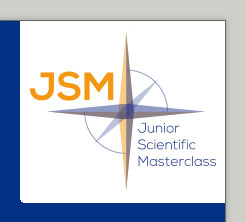Onderzoeksproject aanpassen
Projecten zijn uitsluitend aan te passen door bij het project behorende onderzoekers.
Geef via het uitrolmenu aan welke onderzoeker u bent. Nadat op u de button 'Edit project' heeft geklikt, wordt automatisch een e-mail verstuurd naar het e-mailadres van de onderzoeker die u heeft gespecificeerd.
In deze e-mail staat een link waarmee u het project kunt wijzigen.
Project properties
| Title | investigating and optimizing biocompatibility of endobronchial valve treatment in severe COPD patients |
|---|---|
| Keywords | COPD cell biology medical device |
| Researchers |
dr. D.J. Slebos J.K. Burgess dr. D Pouwels |
| Nature of the research | -Laboratory biomedical experimenatal project -Involves both in vitro and ex-vivo cell culture techniques -testing and assessing biocompatibility |
| Fields of study | biomaterials cell biology pulmonology |
| Background / introduction |
|---|
|
COPD is a severe, often progressive and currently incurable lung disease which affects both the upper airways (chronic bronchitis) as well as the lower airways (emphysema). In advanced stages of the disease air-trapping severely reduces the ability to breathe and subsequently the quality of life. A highly effective treatment for restoring lung mechanical functionality of these patients is the introduction of different bronchoscopic lung volume reduction techniques. Bronchoscopic lung volume reduction involves minimally invasive innovative techniques which release trapped air and improve lung compliance in the most hyper-inflated parts of the lungs, causing clinically relevant improvements in lung, diaphragm and chest-wall mechanics. This is done using small implantable devices such as one-way silicone/nitonol valves inside the airways, through a bronchoscopic procedure. Although the emphysematous tissue is diseased and considered unable to heal itself, within the airways there remains a high drive for healing such that the presence of these valves inside the airways can be compromised and over time can cause treatment failure. These failures are mainly driven by granulation- and fibrotic tissue development, as well as secondary weakening of supporting airway tissue and biofilm formation. Controlling these natural defense and repair processes will enable the maintenance of enhanced lung function for longer and provide better quality of life to patients that have very limited treatment options otherwise. In this project, we aim to harness material driven tissue regeneration, where the influence of material parameters used in medical implants and devices are tailored to control and direct biological processes including fibrosis. Cells in general respond to the their surroundings, and to soluble factors including growth factors and cytokines; in addition the properties of the extracellular matrix that surrounds the cells alters their behavior. Cells will also respond to implanted material in a similar way. Placing a device wounds the tissue triggering a wound healing response in local cells, but the cells that encounter implant material are also directed by this material. We have established high-throughput screening approaches that indicate under which material parameters cells are less prone to go into a fibrotic state. The material parameters that are required depends on the microenvironment, location in the body, and associated cells/tissues. Here we will combine knowledge of the clinical approach, and the possibility to perform ex vivo experiments via obtaining biopsies and explanted lung valves for studying patient-specific effects towards implant materials (Slebos), with expert knowledge on creating model systems and analysis of extracellular influences on cellular behavior (Burgess) and airway cell wound healing responses (Pouwels) and the high-throughput analysis of cell-material interactions. |
| Research question / problem definition |
|---|
| In this project, we aim to harness material driven tissue regeneration, where the influence of material parameters used in medical implants and devices are tailored to control and direct biological processes including fibrosis. |
| Workplan |
|---|
|
a) Characterization of cellular and protein content on dysfunctional endobronchial lung valves b) Identify optimum cell-material properties, here silicone-cell and nitinol-cell interactions c) Development of a 3D-in vitro model to test material-cell interactions using gel-embedded explanted lung valves and primary cells isolated from biopsies and explanted lung valves d) Identification of gene-expression profiles and specific cellular sub-types indicative for valve dys-functioning (deep bulk and single-cell RNA sequencing of near valve biopsies and valve-derived cells) e) Optimized device development with identified material properties f) Implantation and follow-up of novel optimized devices |
| References |
|---|
|
Shah PL, Slebos DJ, Cardoso PF, Cetti E, Voelker K, Levine B, Russell ME, Goldin J, Brown M, Cooper JD, Sybrecht GW; EASE trial study group. Bronchoscopic lung-volume reduction with Exhale airway stents for emphysema (EASE trial): randomised, sham-controlled, multicentre trial. Lancet. 2011 Sep 10;378(9795):997-1005. Klooster K, ten Hacken NH, Hartman JE, Kerstjens HA, van Rikxoort EM, Slebos DJ. Endobronchial Valves for Emphysema without Interlobar Collateral Ventilation. N Engl J Med. 2015 Dec 10;373(24):2325-35. Sciurba FC, Criner GJ, Strange C, Shah PL, Michaud G, Connolly TA, Deslée G, Tillis WP, Delage A, Marquette CH, Krishna G, Kalhan R, Ferguson JS, Jantz M, Maldonado F, McKenna R, Majid A, Rai N, Gay S, Dransfield MT, Angel L, Maxfield R, Herth FJ, Wahidi MM, Mehta A, Slebos DJ; RENEW Study Research Group. Effect of Endobronchial Coils vs Usual Care on Exercise Tolerance in Patients With Severe Emphysema: The RENEW Randomized Clinical Trial. JAMA. 2016 May 24-31;315(20):2178-89. Wouter H van Geffen, Dirk-Jan Slebos, Felix J Herth, Samuel V Kemp, Walter Weder, Pallav L Shah. Surgical and endoscopic interventions that reduce lung volume for emphysema: a systemic review and meta-analysis. Lancet Resp Med. 2019 Feb E-Pub. |


